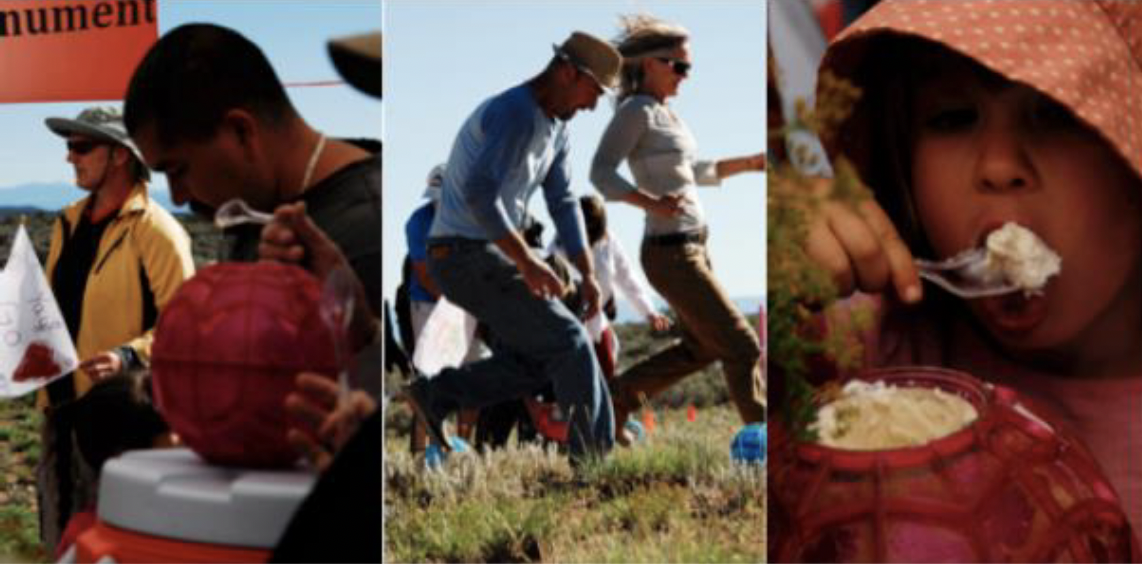Understanding trauma-in-place as placemakers.
‘Trauma-informed placemaking’ is a new praxis conceived by Drs Cara Courage and Anita McKeown. It originated in their observations of the traumatic rupture in the people-place relation during COVID-19 pandemic and the sites of Black Lives Matter protests and police brutality; people were either ‘removed’ from their public realm through lockdown/shelter in place strictures, or the streets they had peacefully inhabited became sites of violent unrest.
Both such root experiences would cause a trauma response, in the immediate and in the longer term. All kinds of trauma create stress reactions and traumatic stress-related disorders comprise a specific constellation of symptoms and criteria, including emotional, physical, cognitive, behavioural, social, and developmental reactions. Trauma may also lead people to find they are unable to stop thinking about what happened, a high level of arousal—or feeling alert or ‘on guard’— which causes people to react strongly to sounds and sights around them. It is this situated and embodied traumatic experience of place that is the foundation of this project.
Importantly, the project further extends placemaking’s inter- and transdisciplinary practice; for the first time, such a book will include contributions from psychologists, sociologists and behavioural scientists alongside place-based artists, designers and architects, planners and policy-makers for example.
This is the first time that the people-place relation has been holistically conceived in this way. But of course, such a trauma-based relation has historical precedent, through colonialism, war and natural disaster, and a future import, vis a vis climate and ecological emergency. Hence, the project brings together historic and contemporary case studies from researchers and placemaking practitioners, as well as future-facing contributions and as best practice recommendations from each contributor to practicably shape and inform the place-based of the future.
The idea of trauma-informed placemaking originated for both Anita and Cara from their lived experiences and individual work.
Anita grew up in Northern Ireland in the 1970s developing an acute awareness of colonialism and place construction and exclusive practices. This has driven Anita’s placemaking work beyond the realms of spatial planning into developing inclusive resilient processes that see placemaking as an existential process of belonging and sensemaking.
Cara’s first encounter with the power of place came from growing up as rural working class in 1980s UK, seeing first-hand the precarity of farming economies and the increasing polarisation of wealth and poverty in the extremes. Cara’s work as a placemaker has taken her to sites of social cleansing and economic, gendered and racial spatial injustice.
These personal experiences were consolidated in their observations of the traumatic rupture in the people-place relation during COVID-19 pandemic and the sites of Black Lives Matter protests and of the climate crisis today and as to come.
The project of trauma-informed placemaking.
‘The project’ is an unfunded and unaffiliated undertaking led by Cara and Anita comprising of a forthcoming textbook published with Routledge, Autumn 2023; and this website as a platform to profile the textbook contributors and contents, share the generative learning and practice developments coming from the contributor cohort Community of Praxis, and to platform further related projects, practitioners, researchers and thought-leaders in this subject area.
The purview of the project is to focus on placed-based trauma incidents and the effect they have on the individual, the community and ‘sense of place’; and then, on place healing, though place-based community responses and interventions to continue necessary activities, regulate emotions, sustain self-esteem, and maintain and enjoy interpersonal and place-orientated relations.
Project mission, objectives & aims.
Broadly speaking, the project has a mission to change placemaking’s practice to be foregrounded by an understanding of trauma and its healing processes and potentials and the work with a trauma-informed approach.
Its primary objectives are to offer a primer for place-based practitioners from which to apply this knowledge to their own research/professional practice and to develop the novel ‘research-as-publication and printed book curation approaches as established by the editor for the wider benefit of the academic publishing sector.
It aims to include:
1. a wide range of voices, from academic, professional, practitioner and community cohorts, and of those that work across place, arts, culture and the psychosocial
2. historic, contemporary and future case studies
3. case studies from indigenous knowledges and from non-Western, non-Northern Hemisphere sites
About the textbook.
Cara and Anita have both worked as curators and have taken this into their curatorial approach to convening conference panels and their co-edited publication, Creative Placemaking: Research, Theory and Practice (Routledge, 2019); and Cara deepened this curatorial approach to publication through her approach the devising and co-editing of The Routledge Handbook of Placemaking (Routledge, 2021).
The trauma-informed placemaking project is to be initially presented as a textbook, a publication that has also been formed through curation. It includes contributions from academics, theorists and practitioners; has the place-based community voice throughout; and is presented thematically, with subject-related book chapters signposted for each contribution. To further support the book’s practical application to the field, each contributor will provide short commentary, list or key learnings for readers to take into their own academic or situated practice.
The book is positioned as ‘research-as-publication’, being the first time that many of the contributors have looked through their practice from a trauma-informed placemaking lens. Thus, the books content is both academically novel and at the bleeding edge of place-based academic and practitioner inquiry and activity.


